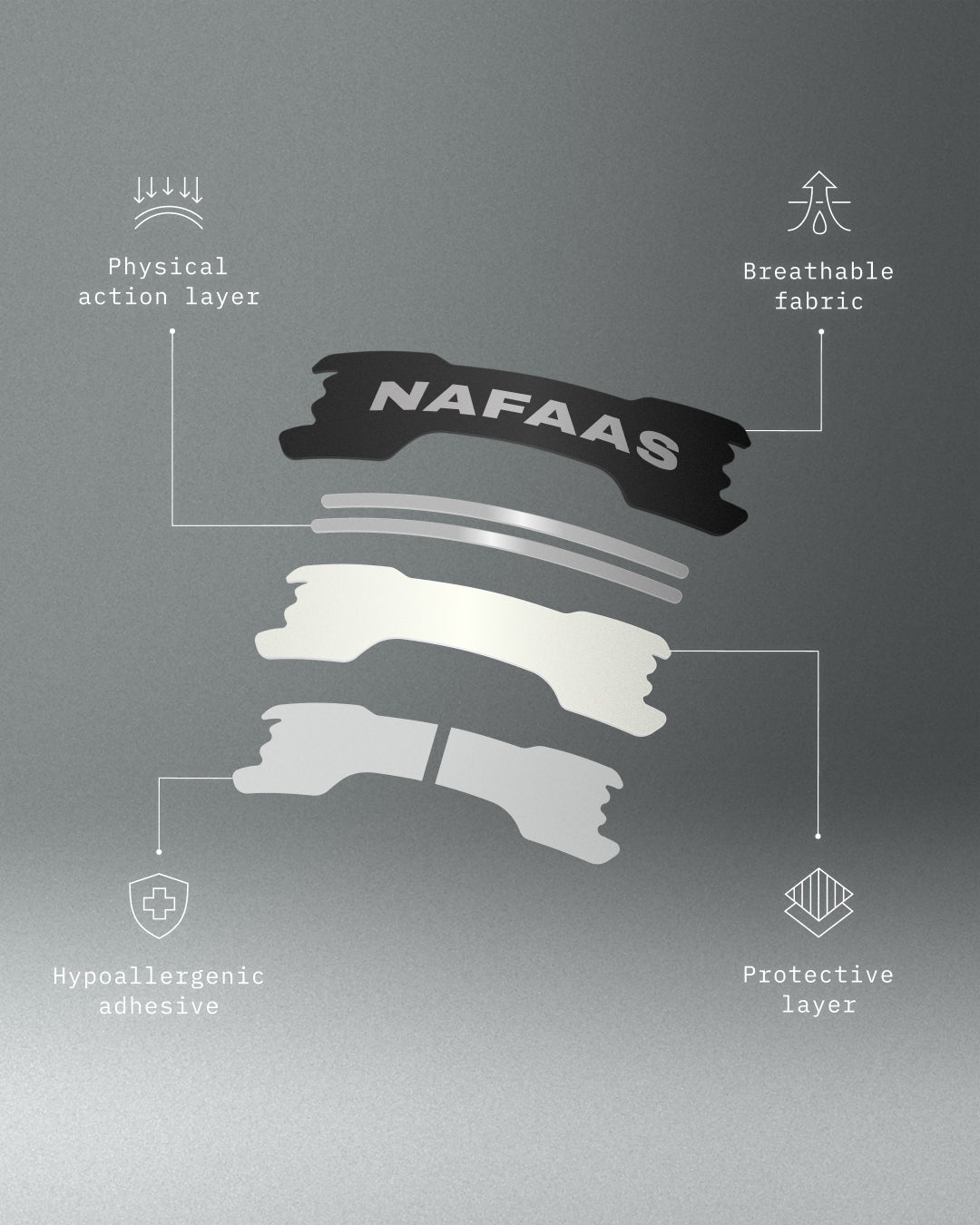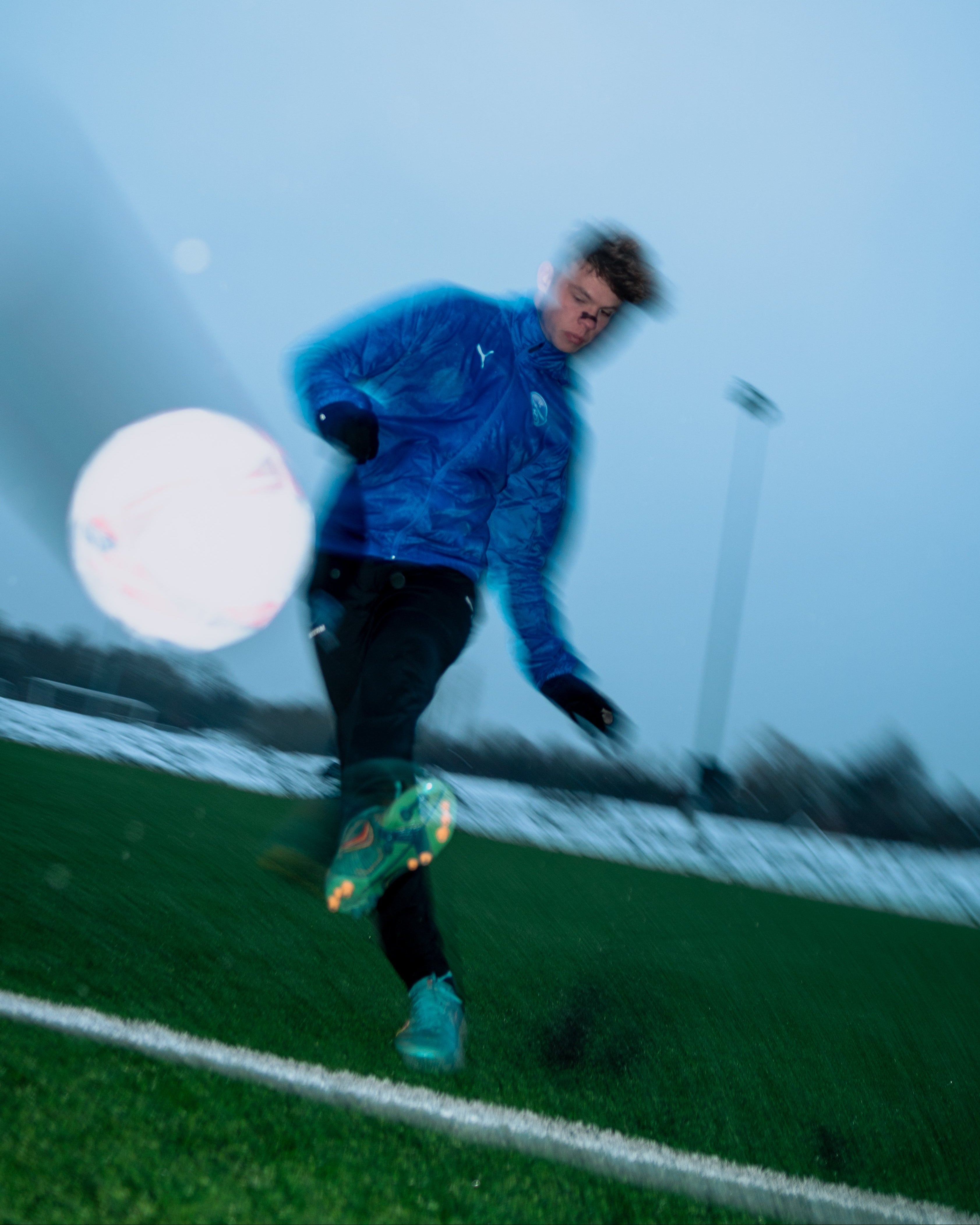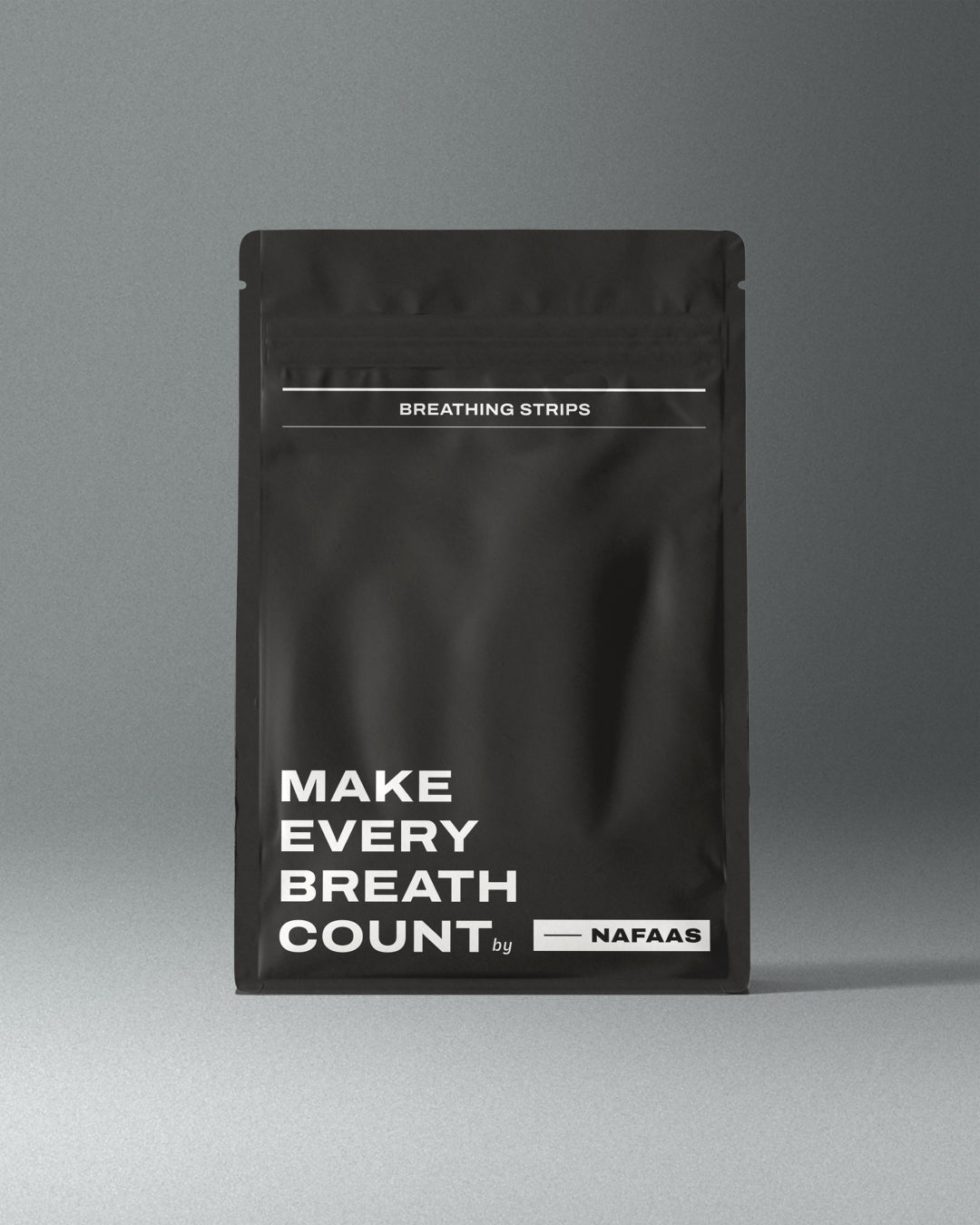The Science Behind Nafaas Nasal Strips
The Science behind Nasal Breathing
In the realm of health and performance, the way we breathe plays a pivotal role, dictating our vitality and potential. Recent revelations and age-old wisdom converge to illuminate the profound impact of nasal breathing over mouth breathing. Let's embark on a journey through the scientific landscape to understand why nasal breathing isn't just a practice but a game-changer.
The Roots of Understanding
The discussion surrounding nasal breathing gained traction with James Nestor's illuminating work "Breath: The New Science of a Lost Art" [1]. Yet, the essence of nasal breathing transcends contemporary insights, with athletes harnessing its power long before it became a mainstream phenomenon.
Scientific Insights
Research from esteemed institutions like the University of Milan [2] underscores the transformative benefits of adopting nasal breathing techniques. Studies reveal that young athletes undergoing nasal breathing training witness remarkable enhancements in physical fitness and pulmonary function [2]. These enhancements encompass heightened oxygen delivery to working muscles, accelerated recovery, and a balanced nervous system.
Delving into Depth
Beyond athletic pursuits, nasal breathing emerges as a holistic approach to optimizing health and performance. By embracing nasal breathing as a 24/7 commitment, individuals stand to reap a multitude of benefits. From increasing tolerance to air hunger and enhancing lung function to improving oxygen uptake and averting dehydration and airway irritation, nasal breathing holds the key to unlocking our full potential.
Expert Consensus
Clinical studies corroborate the superiority of nasal breathing over mouth breathing across various physiological parameters. Researchers have observed that nasal breathing amplifies arterial oxygen tension, fortifies pulmonary function, and augments immune system function through the release of nitric oxide [3]. Moreover, nasal breathing outperforms mouth breathing in enhancing lung volume and arterial oxygen uptake, offering a compelling case for its adoption in both athletic and everyday contexts.
Navigating New Findings
Recent research highlights the importance of maintaining nasal breathing throughout exercise to optimize its benefits. Breathing through the nose during physical exertion increases blood oxygen uptake by a significant 18% [4], enhancing oxygen exchange efficiency and fueling working muscles more effectively.
Understanding the Nuances
It's crucial to understand the intricacies of breathing patterns, especially the impact of exhalation through the mouth. Studies show that exhaling through the mouth during exercise can result in a stuffy nose lasting up to ten minutes [5]. This underscores the importance of maintaining nasal breathing throughout physical activity to improve long-term breathing efficiency and delay breathlessness.
The Incredible Functions of the Nose
Everyday Performance
1. Promotes Relaxation Through Nasal Breathing
Nasal breathing isn't just about taking in air; it's a finely tuned mechanism that contributes to our overall well-being. The smaller passages in the nose compared to the mouth naturally slow down the airflow, regulating our breathing rate and inducing a sense of calm and relaxation [6].
2. Enhances Cognitive Function
The health of our nose isn't just about avoiding congestion; it's about optimizing our cognitive abilities. Studies show that individuals with normal nasal function exhibit better cognitive performance and higher energy levels compared to those with chronic nasal issues [7].
3. Facilitates Smell-Based Partner Choice
Our sense of smell plays a crucial role in selecting partners, both in humans and animals. Interestingly, research indicates that individuals tend to be attracted to partners with dissimilar genetic traits, a preference influenced by olfactory signals [8].
During Physical Exercise
4. Optimizes Oxygen Utilization
The way we breathe during exercise impacts our performance. Nasal breathing has been found to enhance oxygen utilization by the body, suggesting its efficiency in delivering oxygen to the muscles for optimal performance [9].
5. Reduces Ventilation and Breathlessness
While nasal breathing during exercise may initially feel challenging, consistent practice can lead to adaptations in the body's response. Over time, individuals who train themselves to breathe through the nose experience reduced breathlessness and improved economy of breathing [10].
Unlocking the Power of Nasal Breathing for Running
Take a moment during your next jog to observe your breathing pattern. Are you primarily breathing through your nose or your mouth? While mouth breathing may seem like the instinctive choice, the latest performance-enhancing hack suggests otherwise. Nasal breathing during running is gaining traction for its potential health benefits and performance gains. Let's explore why mastering the art of nasal breathing could be the game-changer you've been searching for.
Contradictory Advice and Expert Insights
In the realm of running advice, conflicting opinions often leave us puzzled. Some advocate for mouth breathing, emphasizing the need for maximum oxygen intake during intense exercise. However, Dr. George Dallam, a respected figure in exercise science and former USA Triathlon National Team coach, presents a compelling counterargument. His research highlights the prevalence of exercise-induced bronchoconstriction among endurance athletes due to mouth breathing, suggesting that nasal breathing might hold the key to optimal performance [11].
Understanding Nasal Function in Exercise
Beyond its role in everyday respiration, the nose serves as a vital tool during physical exertion. Its functions extend beyond mere air intake; the nose filters, humidifies, and warms the air we breathe, contributing to overall health and well-being. However, exercise can pose challenges to nasal function, leading to congestion, dryness, and discomfort [12].
Enhancing Nasal Function for Optimal Performance
Prior to exercise, implementing practices like nasal irrigation or using decongestants can clear nasal passages and improve airflow. During exercise, staying hydrated and wearing a nose clip can help maintain nasal patency and prevent dehydration. Post-exercise, allowing time for relaxation and recovery enables nasal passages to return to their normal state, promoting overall respiratory health [13].
Benefits of Nasal Breathing for Runners
Nasal breathing offers a plethora of benefits for runners, ranging from improved oxygen uptake and delivery to enhanced respiratory efficiency and reduced risk of exercise-induced bronchoconstriction. Scientific evidence supports the superiority of nasal breathing over mouth breathing in optimizing oxygenation and minimizing respiratory strain during physical activity [14].
Unpacking the Science Behind Nasal Breathing
Delving deeper into the physiology of nasal breathing reveals its innate advantages for runners. Unlike mouth breathing, which bypasses important filtration and conditioning processes, nasal breathing optimizes air quality, moisture levels, and oxygen uptake [15]. It engages the diaphragm, stabilizes core muscles, and facilitates efficient oxygen exchange in the lungs. Furthermore, the production of nitric oxide in the nasal passages enhances blood flow and immune defense, further underscoring the significance of nasal breathing for overall health and performance.
Integrating Nasal Breathing into Your Training
While transitioning to nasal breathing may initially pose challenges, persistent practice yields significant rewards. By gradually acclimating to nasal breathing during exercise, runners can improve respiratory efficiency, reduce air hunger, and enhance endurance. Strategies such as conscious breathing techniques and inspiratory flow resistive loading can further strengthen respiratory muscles and optimize breathing mechanics [16].
Empowering Runners with Nafaas Nasal Strips
As you embark on your journey to maximize your running potential, consider incorporating Nafaas nasal strips into your routine. Designed to optimize nasal airflow and enhance breathing efficiency, our nasal strips offer a simple yet effective solution for runners seeking to unlock their full performance capabilities. Join the Nafaas community today and elevate your running experience with every breath.
Conclusion
As we navigate the science behind nasal breathing versus mouth breathing, one thing becomes abundantly clear: the
way we breathe shapes our journey towards optimal health and performance. By embracing nasal breathing as a way of life, we can unlock our full potential and make every breath count towards a vibrant and fulfilling existence.
Recommendation
In alignment with these findings, we at Nafaas wholeheartedly advocate for the adoption of nasal breathing as a cornerstone of well-being. Our Nafaas nasal strips offer a convenient and effective solution for facilitating nasal breathing, empowering individuals to embark on a transformative journey towards vitality and peak performance.
References
[1] Nestor, James. "Breath: The New Science of a Lost Art." Riverhead Books, 2020.
[2] Cavaggioni, Luca, et al. “Effects of a nasal breathing protocol on physical fitness and pulmonary function in young basketball players.” The Journal of sports medicine and physical fitness (2021).
[3] Lundberg, J. O. N., and E. Weitzberg. “Nasal nitric oxide in man.” Thorax 54, no. 10 (1999): 947-952.
[4] Growth & Development 2005: Nitric oxide inhaled via nasal respiration has been shown to increase oxygen exchange efficiency and increases blood oxygen uptake by 18%, while improving the lungs’ ability to absorb oxygen.
[5] Strohl KP et al. Nasal flow-resistive responses to challenge with cold dry air. J Appl Physiol (1985). 1992 Apr;72(4):1243-6.
[6] Russo MA, Santarelli DM, O’Rourke D. The physiological effects of slow breathing in the healthy human. Breathe (Sheff). 2017;13(4):298-309.
[7] Ihara, Yasuo, et al. “HLA and human mate choice: tests on Japanese couples.” Anthropological Science 108.2 (2000): 199-214.
[8] Niinimaa, V. P. S. R. J., P. Cole, S. Mintz, and R. J. Shephard. “The switching point from nasal to oronasal breathing.” Respiration physiology 42, no. 1 (1980): 61-71.
[9] Morton, A. R., et al. “Comparison of maximal oxygen consumption with oral and nasal breathing.” Australian journal of science and medicine in sport 27, no. 3 (1995): 51-55.
[10] Dallam, George M., et al. “Effect of Nasal Versus Oral Breathing on Vo2max and Physiological Economy in Recreational Runners Following an Extended Period Spent Using Nasally Restricted Breathing.” International Journal of Kinesiology and Sports Science 6, no. 2 (2018): 22-29.
[11] Strohl, KINGMAN P., MICHAEL J. Decker, LESLIE G. Olson, T. A. Flak, and PETER L. Hoekje. “The nasal response to exercise and exercise-induced bronchoconstriction in normal and asthmatic subjects.” Thorax 43, no. 11 (1988): 890-895.
[12] Niinimaa, V. P. S. R. J., P. Cole, S. Mintz, and R. J. Shephard. “The switching point from nasal to oronasal breathing.” Respiration physiology 42, no. 1 (1980): 61-71.
[13] Dallam, George M., Steve R. McClaran, Daniel G. Cox, and Carol P. Foust. “Effect of Nasal Versus Oral Breathing on Vo2max and Physiological Economy in Recreational Runners Following an Extended Period Spent Using Nasally Restricted Breathing.” International Journal of Kinesiology and Sports Science 6, no. 2 (2018): 22-29.
[14] McGurk, S. P., B. A. Blanksby, and M. J. Anderson. “The relationship of hypercapnic ventilatory responses to age, gender and athleticism.” Sports medicine 19, no. 3 (1995): 173-183.
[15] Martin, BRUCE J., KENNETH E. Sparks, CLIFFORD W. Zwillich, and JOHN V. Weil. “Low exercise ventilation in endurance athletes.” Medicine and science in sports 11, no. 2 (1979): 181-185.
[16] Woorons, X., P. Mollard, A. Pichon, C. Lamberto, A. Duvallet, and J‐P. Richalet. “Moderate exercise in hypoxia induces a greater arterial desaturation in trained than untrained men.” Scandinavian journal of medicine & science in sports 17, no. 4 (2007): 431-436.
so yes... It Works







 FREE WORLDWIDE SHIPPING
FREE WORLDWIDE SHIPPINGDesigned in the UK with your health in mind, these hypoallergenic strips are your perfect partner for better sleep, enhanced workouts, and overall well-being. Experience the difference in every breath.
Breathing is everything, whether you're pushing through a tough workout, recovering from a long day, or simply trying to sleep better. But congestion, fatigue, and restricted airflow hold you back. Nafaas Nasal Strips are designed to open up your nasal passages instantly, so you can move, perform, and recover without limits.
Wash: Start with a clean, dry nose to ensure a secure grip.
Dry: Remove any moisture or oil for optimal adhesion.
Apply: Position the strip just above your nostrils, press down, and let the spring-like bands do the rest.
Boost Performance: Breathe deeper, train harder. Our nasal strips help increase airflow, giving you the edge to go further and push past limits.
Faster Recovery: Speed up recovery by optimising your oxygen intake, reducing fatigue, and getting back to your best self sooner.
Improved SleepScore: Better breathing means better rest. Enhance your sleep quality and wake up ready to take on the day.

